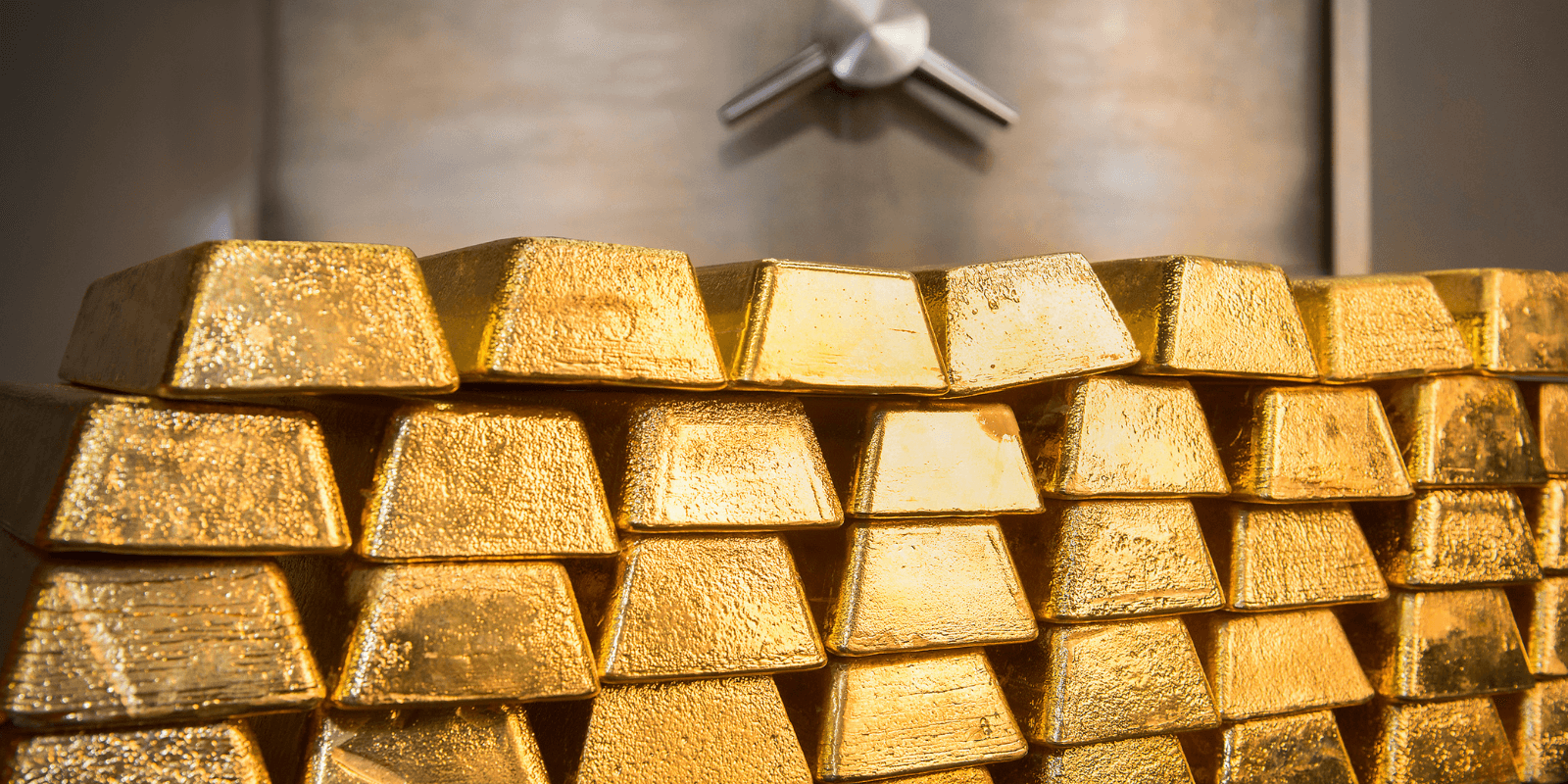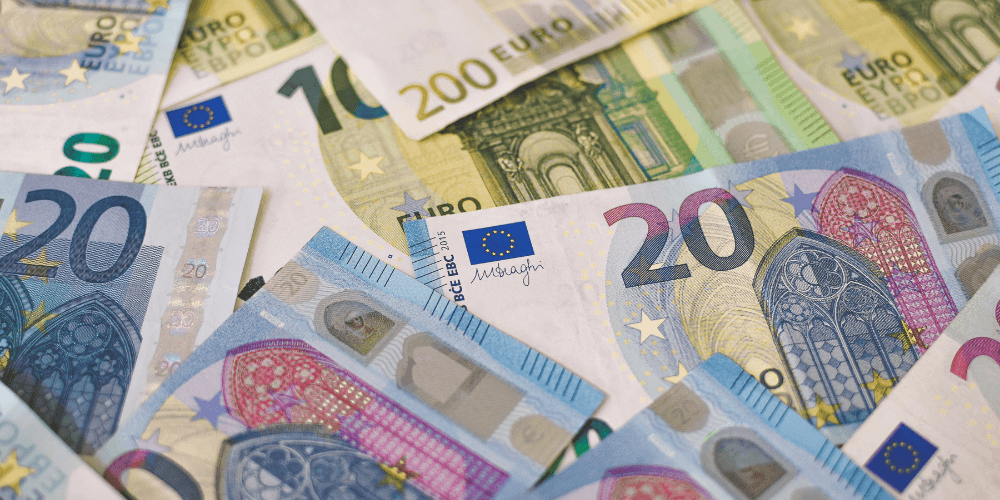
When we think of nations with deep reverence for gold, China and India quickly come to mind. Their cultural celebrations, festivals, and traditions are interwoven with the lustrous metal, making gold an intrinsic part of their day-to-day life. But as the world's eyes often turn eastward, there's another nation that has been quietly nurturing its own century-long affair with gold: Germany. As we pass the 100-year mark since Germany's hyperinflation crisis, it's time to shine a light on this European powerhouse's golden journey. From the wheelbarrows of cash in the Weimar Republic to being the second-largest holder of gold in the world today[1], Germany's relationship with this precious metal is a testament to its enduring allure and the timeless promise of stability it offers to those who choose to hold it.
The Aftermath of War
The year 1923 is etched in the records of German history as a period of economic and societal chaos. The nation, still recovering from the aftermath of World War I, found itself in the grip of hyperinflation. Long before the introduction of the Euro, Germany relied on the German Mark and during this time, the value plummeted so drastically that it took a trillion of them just to equal its original worth[7]. This economic catastrophe saw people carting wheelbarrows full of cash just to buy a loaf of bread, shattering faith in the ongoing resilience of the currency among German citizens and on the international stage.
During this chaos, Gustav Stresemann was appointed Chancellor, and by November of that year, Germany had introduced the Rentenmark, a new currency aligned with the value of the prewar gold mark. This move was not just about economics; it was a bid to restore faith in the German currency and attempt to stabilise the nation as a result. The Rentenmark wasn't backed by vast gold reserves, nor was it convertible to gold. Yet, its value remained equivalent to a "gold mark"[7]. This was achieved by a simple yet effective mechanism: adjusting its supply to maintain its value.
This return to a form of the gold standard attempted to send a clear message on the international stage that in times of uncertainty, gold remained the beacon of stability. Of course, Germany wasn't alone in this realisation as Austria, Poland, and Hungary, all reeling from their own bouts of hyperinflation, all returned to gold in some way between 1923 and 1925[7].
Germany's Modern Reserves
Fast forward to the present day, and Germany's deep-seated cultural and economic relationship with gold remains as robust as it did over 100 years ago. The Deutsche Bundesbank, Germany's central bank, it said to hold the second-largest gold reserves in the world, surpassed only by the Federal Reserve[1]. These reserves serve as both a symbol of economic might and a strategic decision to diversify and secure the nation's wealth for generations to come.
The Bundesbank's recent actions further underscore Germany's trust in gold as between 2013 and 2017, the bank undertook a massive repatriation operation, returning an impressive 674 metric tons of gold from New York and Paris[6]. This wasn’t simply a symbolic demonstration; it was a move set to reinforce Germany's commitment to gold as a cornerstone of its economic strategy for years to come.
But it's not just the German central bank that is bullish on holding gold as the people of Germany also show a keen interest in the yellow metal. Over the decade leading up to 2023, Germany accounted for an impressive one in every eight ounces of global gold coin investing and small bullion bar demand[7]. This appetite outstripped even the USA, despite Germany having a fraction of the American population as many normal people choose to hedge their bets on gold as a store of wealth and economic certainty.
Germany's profound connection with gold is both a practical and a deeply cultural sentiment. The memories of hyperinflation, economic crises, and wars are still fresh in the collective German psyche, underscoring the value of tangible assets in times of uncertainty. Gold, with its intrinsic value and historical stability, is often said to offer a hedge against such economic uncertainties. This trust in gold is evident not just in the nation's vast reserves but also in the private holdings of its citizens.
Combined, these holdings, along with the Bundesbank's reserves, amount to nearly 7% of the world's above-ground gold reserves[5]. Beyond simple wealth preservation, this affinity for gold has been passed down through generations, symbolising a tangible form of financial security that is said to be deeply embedded in the cultural fabric of the nation.

Comparing Germany to the Global Stage
Much like the affinity to gold is interwoven in the culture in Germany, other countries like China and India both of which have rich cultural and historical ties to the metal. Both nations have long-standing traditions of gifting gold jewellery during festivals, like Diwali in India, as well as weddings and other celebrations[6]. However, when it comes to investment in gold coins and bars, Germany has quietly risen to the challenge of these Eastern giants.
Over the decade leading up to 2023, Germany's demand for gold coins and small bullion bars was second only to China and India and even outstripped the USA which is one of the top purchasers of gold on the international stage[7]. This commitment to gold is a testament to the German public's belief in the metal as a long-term investment, a hedge against the economic uncertainties of the future, and a store of value and wealth for generations to come.
In essence, while the East's gold demand often captures global attention, Germany's affinity for the yellow metal is just as profound, if not more so. It's a relationship that's been forged over a century and continues to thrive today, reflecting both the country's historical experiences and its forward-looking economic strategies.
What Does the Future Hold?
A century ago, Germany faced one of the most turbulent periods in recent history, with hyperinflation reaching unprecedented levels. The mark's value plummeted to such an extent that it became practically worthless, leading to economic chaos and social unrest[8]. In the aftermath, Germany's decision to peg its new currency to gold at pre-war parity was not just an economic strategy but a symbolic move, signalling stability, trust, and an attempt at a new beginning.
Fast forward to 2023, and Germany's societal and cultural relationship with gold remains as strong as ever. However, recent data suggests that the landscape in the short-term may be changing. The first half of this year saw a significant drop in the country's gold coin and small-bar investment demand, a decline of 75% from the first half of 2022[7]. Although this shift can be attributed to various factors, including record-high gold prices and rising interest rates on bank deposits, we are yet to see what the long-term impact may be.
Although this may be the case, while current trends indicate a shift in investment patterns, the underlying trust in gold, borne out of a century of economic challenges and triumphs, is unlikely to falter. The Bundesbank's recent efforts to repatriate gold, making it the second-largest holder of gold reserves globally, further underscores the nation's commitment to the precious metal and represents a commitment to remain at the top of the leaderboard when it comes to this important precious metal[4].
As we reflect on the past century, the suggestion is that gold will continue to play a pivotal role in Germany's economic and cultural narrative. Whether as a hedge against economic uncertainties, a symbol of prosperity, or a testament to past challenges, gold remains deeply intertwined with Germany's identity.
The contents of this article, accurate at the time of publishing, are for general information purposes only, and do not constitute investment, pensions, legal, tax, or any other advice. Before making any investment or financial decision, you may wish to seek advice from your financial, pensions, legal, tax and/or accounting advisors.
This article may include references to third-party sources. We do not endorse or guarantee the accuracy of information from external sources, and readers should verify all information independently and use external sources at their own discretion. We are not responsible for any content or consequences arising from such third-party sources.
References
- The development of the Bundesbank’s gold reserves | Deutsche Bundesbank
- Germany has got its gold back — They must know something we don't (cnbc.com)
- Germany brings its gold stash home sooner than planned | Reuters
- Gold Repatriation | When Germany Demanded Back Its Reserves (physicalgold.com)
- The vast gold hoards held by Germany’s population - Ronan Manly (bullionstar.com)
- Germans Have Quietly Become The World's Biggest Buyers Of Gold (forbes.com)
- Germany's Gold Coin and Bar Demand Collapses | Gold News (bullionvault.co.uk)
- In Hyperinflation's Aftermath, How Germany Went Back to Gold (forbes.com)
(All sources referenced on 2nd October 2023)
